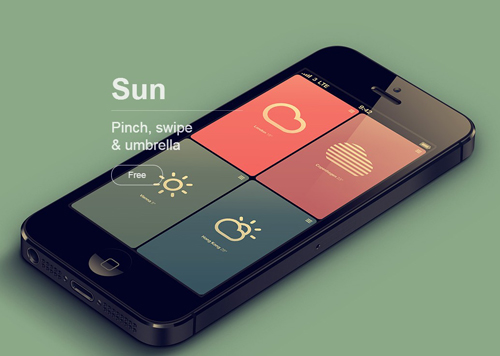For modern businesses, an online presence is essential to staying competitive. These days, many people first learn about a company online. They look for services or products, read about someone’s achievements, and discover new names in certain industries. Searching for goods, shopping, performing banking operations, reading the news, etc. on the Internet is very convenient. So, more and more people are discovering this way of accomplishing everyday tasks. That’s why companies are investing in top-class digital platforms.
To create an aesthetically pleasing high-performance site, a business should find a reliable IT company offering custom web development services. There are numerous players in the software market, so finding the right partner shouldn’t be problematic. The number of experienced developers and designers keeps on growing. According to Statista, by 2032, it will reach over 229,000 in the US alone. In comparison, last year, it was about 200,000. And there are many other countries where development services are less expensive and as qualitative as in the US.
The main thing is to find specialists with the appropriate knowledge and sense of beauty. They will make your site unique, which in most cases ensures success.
What is the difference between web design and web development? Let’s find out.

Web design vs web development
Even if you don’t possess the relevant knowledge yourself and are going to hand over all the tasks to IT professionals, you might need a general idea of how everything functions. The concepts sound similar and go hand in hand together. However, there are substantial differences.
Design relates to the front end of a digital platform, and its appearance. It is extremely important because a page is the first thing visitors see when they enter a site. UI designers strive to make the platform look as aesthetically appealing as possible. In addition, comfortable and clear navigation is important. If specialists fail to implement these features, even the most technically tricked-out site won’t succeed. A visitor will abandon it if it doesn’t respond to their tastes and is too complicated to browse.
As part of understanding the whole process, you may also want to explore how to create a website from scratch. By learning this, you can get a firsthand understanding of both design and development aspects of a website. This knowledge will empower you to make informed decisions when it comes to designing your own platform.
In turn, development has to do with how the site functions. It’s invisible to the average user, but just as important. For example, a designer creates a navigation element. It is aesthetically pleasing and placed on the page according to the basic laws of proportion. But it won’t work properly if a developer fails to ensure its functioning. Developers thus deal with both front-end and back-end. They are responsible for the code and make sure that everything runs impeccably.
Thus, web development and web design are closely linked. Companies that want to strengthen their online reputation or achieve greater Internet visibility should pay equal attention to them. Development professionals have insight into design, and vice versa. Either way, specialists from both areas work closely together, and their goal is to create a stable, strong product with great performance and an excellent look.

Web designer vs web developer
The main difference lies in their key tasks and responsibilities.
A designer is rather an artist who deals with the visual side of things. This specialist creates a layout and thinks through the usability and outer looks of a custom digital solution. Creativity, graphic skills, and a sense of beauty are top qualities for people working in this area. Mostly, these are UX and UI designers. The first ones are responsible for the usability and clarity of a solution. UI specialists deal with aesthetic issues first of all. But a well-versed expert may work in both areas.
In turn, a developer creates the structure of a site and then builds and maintains it. Their primary task is to “translate” an idea into a stable good-working product. They must possess knowledge of relevant languages.
Let’s find out what typical tasks these specialists carry out.

Designer’s role
There are different types of designers. Their tasks overlap to a certain extent, but each has their own focus and primary responsibilities:
– UX designers must ensure seamless navigation. They must be aware of the needs of the target audience and implement all the site features in such a way that visitors feel comfortable using the digital platform. Those in charge of UX determine how best to place elements and buttons and how to implement flawless navigation. Their overall goal is to create a visually impeccable site that attracts as many users as possible. What’s more, it should be equally comfortable to navigate on different devices.
– UI designers create wireframes and prototypes and think through the entire visual concept. They also build interactive and visual elements. UI experts think through the details of how the site will look, what color schemes are more appropriate, and how to design a logo for a startup or rebrand one for a large company.
– Visual designers’ primary aim is creating graphics, color schemes, and anything related to the aesthetics of a custom digital solution. In many aspects, their work is close to that of UI specialists.
So, a designer carries out numerous tasks, but their core responsibilities are focused on the visual. They think about how the platform will look like.
The designer must also look through multiple sources for relevant information, research the case in more detail, and make sure that the design is consistent with the writing of the code. The structure and layout of the site should be easily implementable by tech professionals.
Since sites are not monolithic constructions created once and for all, designers also collaborate with the site team after the product launch. If any changes or major revisions are needed, these professionals help to introduce the necessary modifications.
Top designers create trends to follow. Beginners should take best practices in design into consideration to achieve success.

Developer’s responsibilities
There are three key types of specialists in this area:
– Front-end developers building the visual component of the site. In many ways, their work overlaps with that of designers. These professionals write the code in such languages as CSS, HTML, JavaScript, etc.
– Back-end developers who handle server-side tasks. They code the database in such languages as Java, Ruby, PHP, and others. The work of these specialists is hidden from the ordinary eye but no less important than that of front-end specialists.
– Full-stack developers who are well-versed in all key processes and tasks.
All professionals working in this area must have an impeccable command of programming languages designed for web development.

Web development and web design: the importance of collaboration
Any complex project employs different specialists. And any complex project requires the ability to work as a team and collaborate with each other, to understand each other’s ideas and notions, and to have an efficient discussion if any issues arise.
This is also true for professionals building sites. If they pursue their tasks isolated from each other, at some point they may face critical discrepancies. At best, this will affect the usability of the site, at worst, it will lead to critical failures.
Therefore, it is necessary to keep each other in the focus of attention all the time. Only in this case will experts create a high-performance platform, with a beautiful interface, great code, and enhanced performance. In addition, close cooperation allows you to avoid unnecessary costs and meet shorter deadlines.
Cooperation allows specialists to reap the following benefits:
– They get additional validation from other professionals. It’s always good to have someone to evaluate your work with a fresh eye. You can spot a lot more mistakes that way.
– Cooperation in the field of web development and web design opens up greater opportunities for creativity. Sometimes, designers run out of ideas, and a developer can offer their vision of certain things. Even though they are not experienced in this area, their thoughts should be taken into consideration. Very often, lay opinion can work magic.
– If you collaborate with an experienced professional in another field, it significantly broadens your knowledge. When specialists of different profiles work together, they learn from each other. This allows them to discover new things and approach their tasks with a new vision. Thus, if a designer knows the key principles of the development process, they will assess if it is possible to implement a particular idea related to design in practice. They can understand if their colleague from the development team can write code for an element so that it works exactly as it is meant.
– You get a complete picture of the project. If specialists work on their own, everyone will only see their part of the job. So, they lack cohesion and complete panorama, which are essential for digital projects. To make the parts of a system function perfectly with each other, you need to think them through at the same stage of the development process.
Of course, there can arise certain misunderstandings when working together. If web designers and web developers are located in various places, they should conduct online meetings. Furthermore, their vision of the product may differ. But professionals will definitely find a way out if something like this happens.

Web design and development services: tips for specialists cooperating on a project
Designers can show their expertise in the following ways:
– Since they have exhaustive knowledge of design theory, they should outline the basic components so that developers understand the principles of what is considered aesthetic or visually pleasing.
– They should figure out how the interactive elements will work and discuss them with the developers right away. Can this or that idea be implemented? Will this button work as intended?
– The primary goal of the specialist of this profile is to create a coherent design since the developer is unlikely to make changes. They need to prepare the base completely, to facilitate the writing of code.
– If there are any doubts about the feasibility of certain ideas, it is better to talk them over with the developers as soon as possible. You need to find out whether they can be implemented in practice. For example, whether it is possible to use this or that font, etc.
– Provide design developments in appropriate formats.
In turn, developers should consider the following issues:
– Since you have a great opportunity to learn more about color theory, typography, etc., take advantage of it. An experienced designer will provide you with insights into this exciting area.
– If there’s a feature you can’t develop, let the designer know as early as possible. If you’ve already worked on a few similar projects, you may have a base of ideas that emerge very often but are hard to implement. You can draft a list and give it to your colleague to avoid unnecessary work.
– You can contribute significantly to design at the stage of developing UX functionality. After all, the usability and comfort of the site is not only the designers’ task but yours too.
– If designers need advice, try to help them.
– If your colleagues have given you a coherent design concept, try to stick to it, even if some parts cause you discontent.
When working in a team delivering web design and development services, simply follow the Agile Manifesto. Its principles are vital for IT professionals.

Conclusion
Web development and web design complement one another when creating digital platforms, and both are indispensable. So, if your company needs to create a site from scratch or update the existing one, you should hire experienced specialists in both fields. Any beautiful and powerful site emerges as an outcome of a fruitful collaboration of designers and developers.
“Web design vs web development” or “web designer vs web developer” – such catchy titles suggest certain discrepancies. However, these concepts and roles should be regarded as meaningful parts of the entire process that cannot exist without one another.





